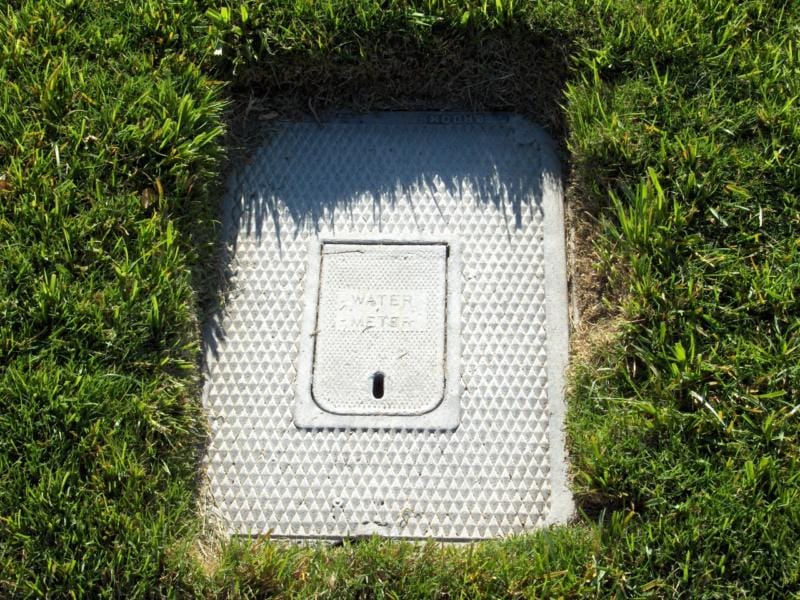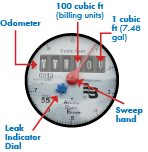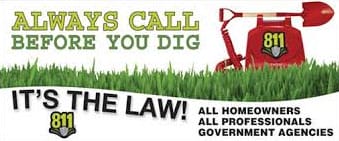How to find
and fix water leaks
The District purchases wholesale water from Seattle Public Utilities (SPU) for retail sale and distribution to its customers. SPU does not grant any adjustment for leakage. Therefore, any adjustment would be to reduce the cost of the calculated excess water down to the wholesale rate paid to SPU.
How to Detect Leaks at Your Water Meter
Step-by-Step Instructions
Your water meter may tell you if you have a leak. If you do not know where your meter is located, call us at (425) 398-4403 and we will help you find it.
1. Locate your water meter
The Water Meter is usually in a concrete box at the front of your property on the edge of the right-of-way.
2. Make sure no water is being used
Inside or outside of the house or business.

3. Check the leak indicator dial or icon on your meter.
If the dial is moving or the leak icon is visible and no water is being used, you may have a water leak.
It is possible to have an intermittent leak at a toilet or drippy faucet that may not show at the meter – more about how to check for those below.

4. You can also use your meter register to verify a leak.
Note your meter’s usage number, wait one or two hours (making sure no water is used), then read usage again. If the reading has changed with no known water use, you have a leak.
5. Isolate leak to inside or outside house.
Turn off water at your main water shut-off valve – usually found in a garage or basement. If you do not have one (recommended to install), make sure no water is being used and turn off toilets at the valve.
6. Check the water meter again.
If the leak indicator dial stopped moving, this indicates a possible leak inside. If the dial continues to move, this indicates a leak between the meter and your home or building.
7. If the leak is isolated to inside: check toilets first.
Toilets can often leak silently and off-and-on, but rack up many gallons of water use in a short time! Try the toilet dye test: drop a few drops of food coloring in the toilet tank (not the bowl). Wait about 30 minutes or overnight if possible, then check again. If the dye has run into the bowl, you most likely have a flapper issue.
8. If the leak is isolated to outside: you can do a visual test first.
Walk your property looking for any unusually wet or green spots, or dark spots on otherwise dry concrete. If you find no conclusive information, at this point you need a professional’s assistance.
9. Tips on hiring a contractor:
Check friends and family network and online reviews. Facebook groups like Kenmore Neighbors and Be Neighborly Kirkland are great resources for contractor references.
Check what services contractors provide – some plumbers can do leak detection and repair which may save you money.
Get three (3) free estimates if possible to have a high/low price comparison.
11. Check into our Leak Adjustment Policy
If you make repairs within the allowed time period, you may be eligible for a credit for some of the water overage costs. Our Leak Adjustment Policy allows one bill adjustment every two years. Get application info HERE.
*Please note: The homeowner or business owner is responsible for all repairs on private property, from the meter to the building. Northshore Utility District takes care of leaks that occur between the meter and the right-of-way.
Have more questions? Contact us anytime at (425) 398-4403 or dispatch@nud.net.
More Resources
Troubleshooting Leaks
Download the One-Page Guide to Troubleshooting Common Leaks (PDF).
How To Videos
Find and fix the most common household leaks–toilets, indoor and outdoor faucets.
